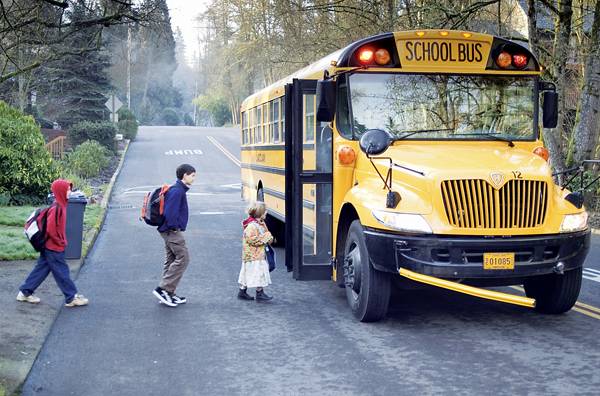FREDERICK: Plan deserves failing grade

Transportation times to rural schools can take up to 45 minutes in towns such as Adair and Walnut. Photo Courtesy: Sxc.hu/saltoricco
February 17, 2009
Education has been important in Iowa since, well, before it was even supposed to be here.
A Tennessean by the name of Berryman Jennings was hired to teach at the first school in what would become Iowa in 1830 — a full nine years before legal emigration was allowed across the Mississippi and 15 years before statehood. Located in Lee County, it consisted of what former student Capt. James Campbell described as “a small log house, 10 by 12 feet in size.”
In many ways, then, education has been important in Iowa since before there were Iowans. Over the course of the next century, the legacy of Jennings and that first small log structure was propagated throughout the state, as one-room schoolhouses arose — mere islands amid the prairie grass, then landmarks among the cornfields. Iowa’s foundation is, indeed, in education, as the state’s commemorative quarter says.
In short, rural schools have existed here longer than virtually any other institution.
But Sen. Matt McCoy and other urban legislators want to change that.
Mr. McCoy’s notion — to consolidate all the state’s school districts with less than 750 students — runs headlong into not only this state’s illustrious educational history, but also flies in the face of facts and common sense.
Firstly, education has always been a local issue in this state. We’ve been through consolidations before — putting two, three and four schools together into one at times — but this has in most cases been the result of a local recognition that the time had come for something to be done for the good of the students. Consolidation is not practical and will not accomplish anything other than confusion, anger and cultural degradation if forced from above by urban legislators with no interest in rural people and no stake in rural communities.
Case in point: the little matter of geography. Television news ensures that we hear about the tumult each time Des Moines Schools tries to close a school building somewhere, and parents crowd the boardroom because their children may have to ride the bus for another 15 or 20 minutes. The sense of distance is distorted when — as Senator McCoy and the other lawmakers behind his concept do — people live in, work in and very rarely leave an urban setting.
Senator McCoy, try making it from Adair to Greenfield on a bus in under half an hour. From Mapleton to Onawa in less than 40 minutes. From Walnut to a school in Council Bluffs in under 45 minutes. Never mind what happens when snow or flooding becomes an issue.
Nor do relevant statistics on the state of education in Iowa support a mass consolidation plan on this level. Indeed, they seem to point to precisely the opposite conclusion. The following facts can be gleaned from a cursory examination of Iowa Department of Education statistics:
The 10 largest high schools in the state have an average graduation rate of 84.4 percent, while the 10 smallest high schools in the state beat that number handily, with a graduation rate of 96.7 percent (a pattern which generally holds true throughout the data set).
Only nine schools enroll more than 20 percent of their student body in programs for Talented and Gifted (TAG) students. Of these, seven would be forced into consolidation.
Smaller schools outpace their larger neighbors in terms of access to technology. 39 schools have a student-to-computer ratio of two or less. All but one of these schools would be consolidated under Senator McCoy’s plan.
The list could go on. It is sufficient, however, to say that if we are results-driven in our approach to education, and if we rely on the performance metrics most often used to evaluate schools, Mr. McCoy’s plan is a dismal failure waiting to drag down public education in Iowa.
Are Mr. McCoy and his associates so short-sighted as to miss all this history and all these facts?
I won’t answer that. But perhaps there is another answer.
You see, all this talk about rural schools and forced consolidation masks an embarrassing truth in Senator McCoy’s own backyard: the flagging performance of Des Moines’ own schools. Indeed, Des Moines Independent Schools accounts for nearly 11 percent of expulsions and suspensions, despite enrolling only six percent of the state’s students. Additionally, their graduation rate is a mere 73.9 percent, the second worst in the state. This, despite over $249.6 million in state and federal allocations, dwarfing every other school district in the state.
The legacy of Jennings and that first log schoolhouse still echoes down to us today. The people of Iowa — all of them — demand that greatest of all resources: the resources to unlock the mind, which knows nothing of location, population or enrollment.
Ryan Frederick
Former Opinion Editor
Alumnus
Iowa State University
















